Thursday 2nd March 2023
We have begun to start our days later and later, our slow mornings dragging into the early afternoon. So today Donato attempts to realign us and arrives at 8am, baked goods in hand, and beckons us out of the house and into our cars. We follow him to a roadhouse some 20kms out of town.
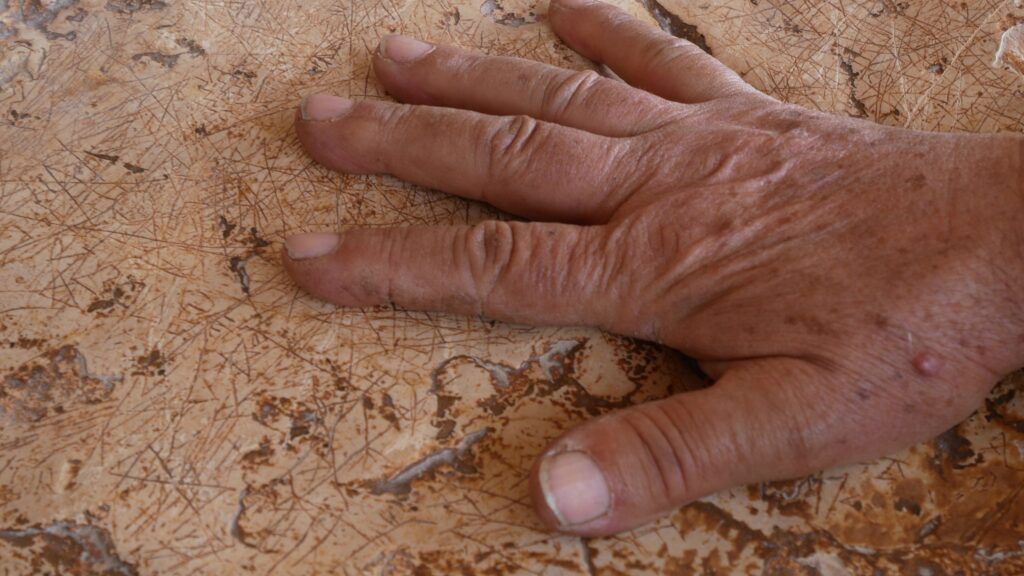
Within the confines of the vehicle we somehow get to talking to the harder aspects of our relationship: in particular our communication and where it breaks down, as well as the stress of being romantic partners and work partners. Nothing feels resolved when we pull into the roadhouse and we encounter the familiar whiplash of shifting moods to present a kind face to our collaborators.
The roadhouse is a trip—wood paneling and tiled floors that remind Adrienne a little of her grandmother’s house. Inside the journalist Cosimo Farina is already waiting for us.
We jump back in our cars and out to some hills where we hike out to the far end of a cliff. There under the hanging rock, Cosimo shows us ancient cave markings and etchings that he had discovered some years back and had researched and reported on. Running his hands over the smooth stone, he explains that it seems to be some kind of accounting system, likely for tracking the movement of herds of animals in the area for hunting.
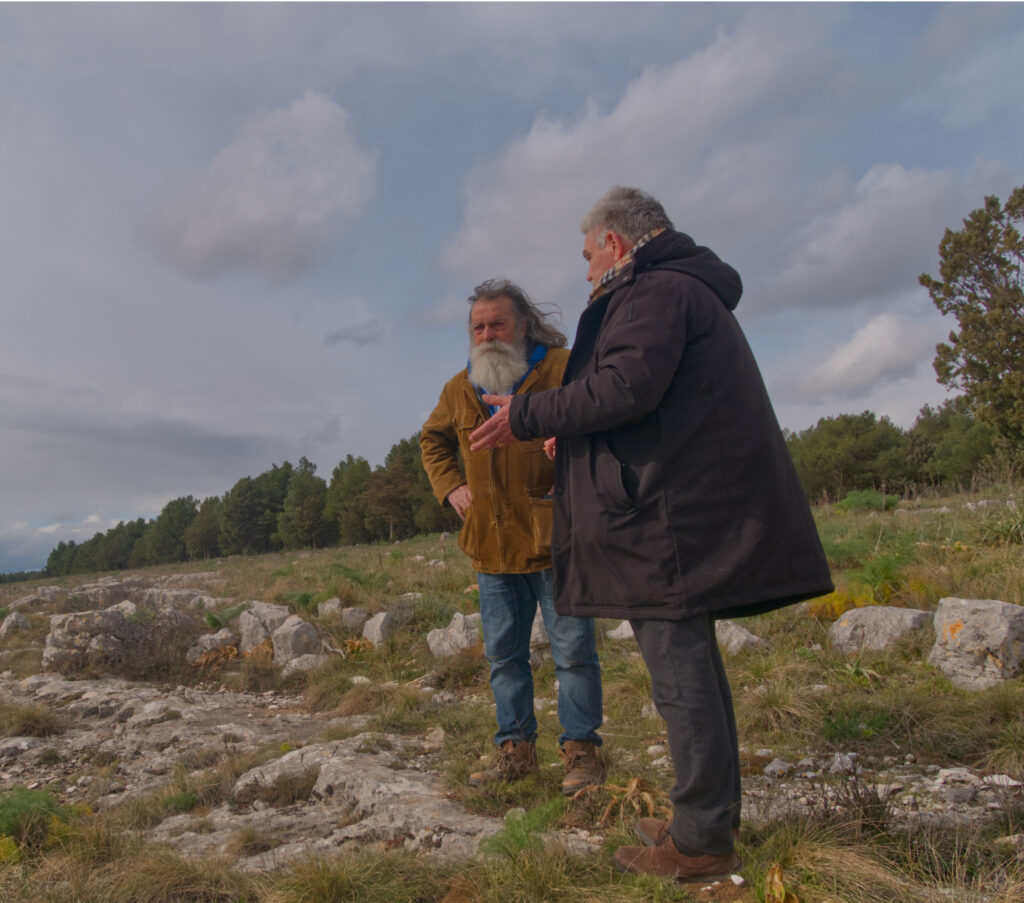
Again, Adrienne feels lost in the lack of a shared language, the partial and miscommunications that roll past, the inability to share a subtle thought, the frustrating failure of translation apps to really support a flow between us all.
Directly below this ancient gathering place, somehow preserved for millennia is a sprawling mine, its mechanical beasts groaning and growling, as they lift and discard colossal loads of rocks and stone and dust, massacring millennia in the blink of an eye to manufacture cement. We take the audio and hope that somehow it can convey its contradictions to future listeners.
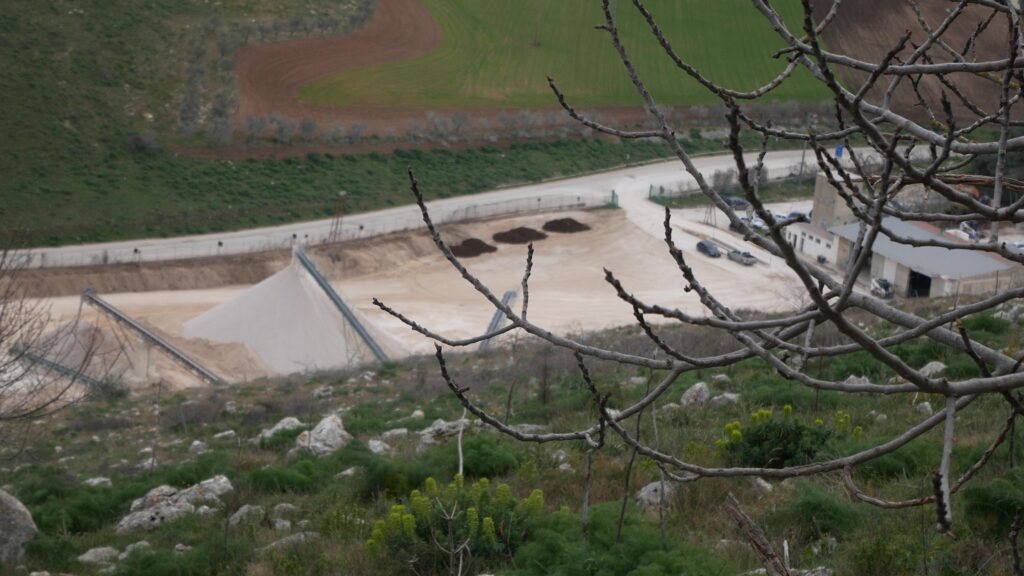
Cosimo has an uncanny knack for unearthing hidden histories: as we walk back from the cave he stoops down and emerges with fragments of ancient pottery. These artifacts are brought to the surface by moles as they travel in and out of their subterranean world: “Moles: the original archaeologists,” he says and grins.
The ground becomes increasingly lumpy and Donato explains that we are walking atop of tombs. Is it only in the Murgia region that the proximity of the living and the dead feels so wafer thin? Or are we simply not aware?
After a short walk through a forest path, we come across a Bauxite mine from the 1960s, whose red wound has been partially reclaimed by nature. A mix of sadness and inevitability washes over us each time we encounter these remains of human extraction.
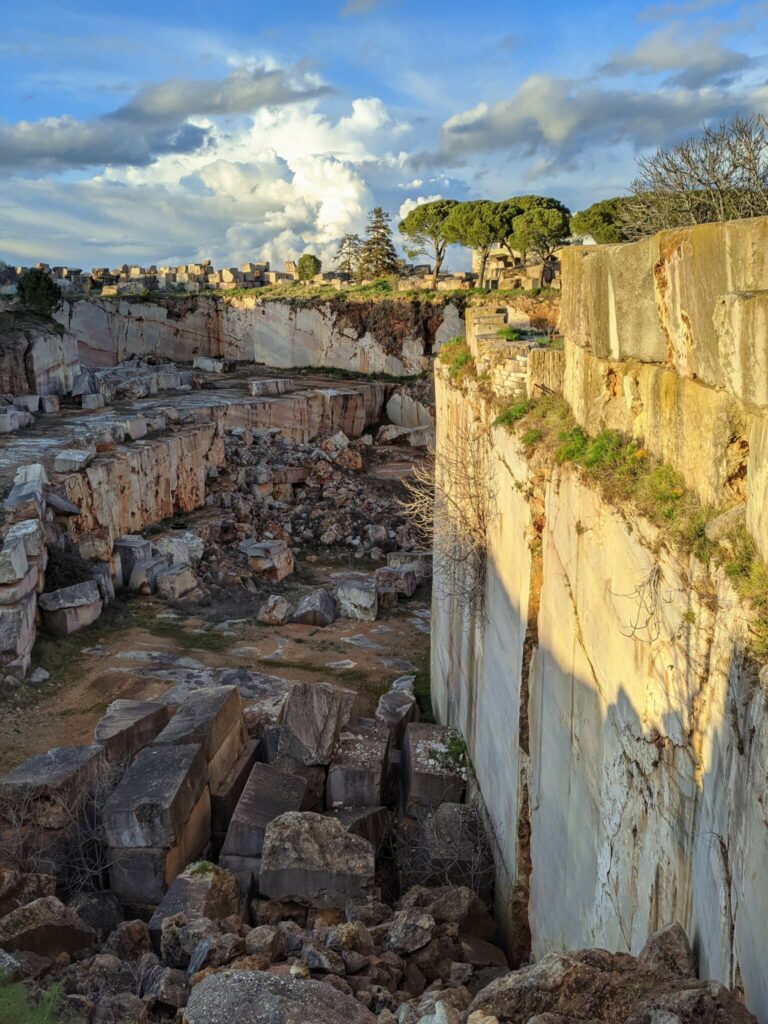
Cosima and Donato lead us a little further along the path to the immensely deep “La Grotta del Cavone”. We cannot really see inside, only a tiny black hole leading to the vast cavern beneath the earth. Adrienne throws a stone and it is many seconds of anticipation before we hear it crash onto the bottom of the abyss.
We drive on and visit a town called Spinazzola. In a field on the outskirts, a flock of falcons dives and ascends against a brooding heavy-blue sky. Their screeches tussle with a cacophony of canine voices from the pack of dogs that roam the same field. Although the site is compelling, we are confused as to its significance, why exactly Cosimo and Donato brought us here. And we lack the language to really ask. We try to catch the sounds of the falcons but as we approach the field the packs of dogs growl and bellow at us, so we give up.
We drive on down a mud track and meet a couple who run a kennel for the stray dogs. They open the trunk of their car and reveal a pasta ragout that they feed the falcons and the dogs every day for lunch. Still, it feels like something is missing. It is the kind of moment where we wish we had an interpreter, because we can only half grasp at what is happening.
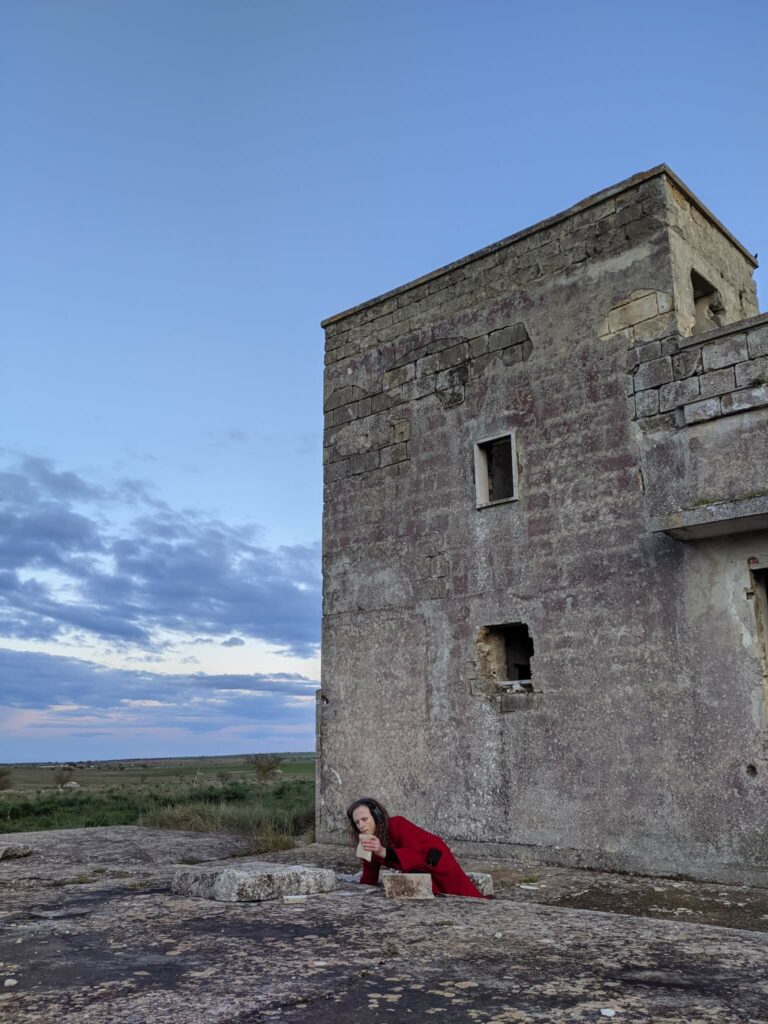
The smell of the dog piss and hormones is extreme.
Finally, we audition another venue for our workshop, a quarry which we informally name “the cemetery of stone blocks” because the sheets of rock left behind in the quarry look like gigantic tombstones. The glow from the setting sun, and withthe sounds of distant birds and animals caressing our ears, we knew we had found our sanctuary for the ritual.
As we leave, Adrienne discovers a water tank underground, and records its watery reverberation when struck by sharp stones creating a symphony of echoes in the gathering twilight.